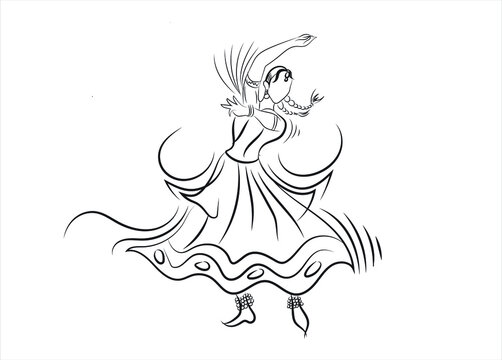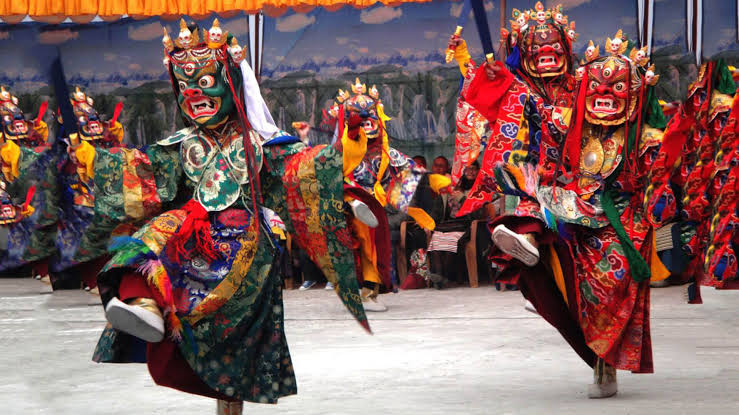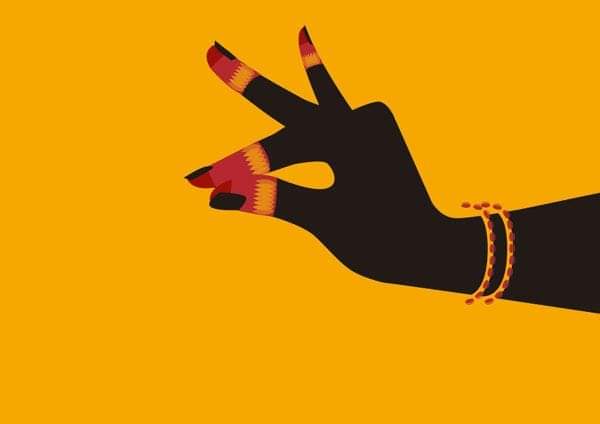India carries its own identity through different forms of arts and cultures over thousands of years. Apart from paintings, sculptures, literature, music, and performing arts, Dance is a significant medium to connect with spectators. It is believed that all kinds of Dances came from Lord Shiva and Goddess Parvati. There are eight main types of Indian Classical dancing forms that are widely popular throughout the subcontinent. Kathak is one of the most significant artistic classical dance forms in India.
Origin of the Kathak
The origin of this dancing form is rooted in the Sanskrit Hindu Text ‘Natya Shastra’, an ancient texture on performing art. This unique text was written by the great Indian Musicologist and theatrologist Bharat Muni between 500 BCE to 200 BCE. Some historians believe that this unique dancing form of Kathak originated in the northern portion of the county and became popular within a few decades. It is believed that Kathak, a well-known ancient Indian classical dance, originated with the wandering storytellers known as Kathakars in North India. Similar to early Greek theater, these Kathakars journeyed and told stories with dance, music, and songs. Originally, the journey of Kathak started during the time of Budhha. But this dancing form became advanced in the medieval period. During the Bhakti movement, a trend of theistic devotion that emerged in Hinduism in the medieval period in this dancing genre became more popular from this time. The Kathakars use rhythmic foot movements, hand gestures, facial expressions, and eye work to convey stories.
Different Forms of Kathak
Based on the opinions of different historians, it is found that this performing art was incorporated from different legendary and mythical stories of the great Indian epic Mahabharata. Through Kathak dance, performers try to portray the life of Lord Krishna. This dancing form was very popular in the courts of North Indian Kingdoms. The Jaipur Gharana, the Benaras Gharana, and the Lucknow Gharana are three distinct variations of this dancing form or three Gharanas or schools. Based on acting and footsteps, these three Gharanas differ primarily and emphasis accordingly. By introducing Parans and Kaviths,
Jaipur Gharana concentrated more on movements imitating the actions of a warrior. Some of the features of the Jaipur gharana are aggressive movement, excellent footwork, and spins. The Banaras Gharana, which developed along the banks of the Ganges, placed more focus on spiritual connections. The Banaras gharana was known for its tumris made from “bol banana.” including bhajans. The Lucknow gharana is concerned with delicate motions, culture, ethics, romance, and sringar. Some of this gharana’s uniqueness include Ghazals, Amass, and Gabs. Ishwari Prasad was a follower of the Bhakti movement and he developed the Lucknow Gharana of Kathak. It is believed that Lord Krishna appeared to Ishwari Prasad in his dreams and gave him the order to create “dance as a form of worship”. The narratives of Lord Krishna and his eternal love Radhika or Radha contained in books like the “Bhagavata Purana,” which were magnificently rendered by Kathak artists, were a major focus of Kathak development throughout the time of the Bhakti movement.
Costume of Kathak
During this time, many Muslim art enthusiasts also adopted this unique dance form, and its influence is still found in the costume of Kathak. Since Kathak is appreciated by both Hindu and Muslim groups, its costumes are created in accordance with regional traditions. For female dancers, there are two different styles of Hindu outfits. While the first costume includes a unique fashion composed of choli with bright coloured sari. Sometimes stitched blouses cover the upper body with a unique style scarf. The other costume consists of a long, embroidered skirt paired with a contrasting choli and a transparent urhni. Long embroidered skirts with transparent urhni or choli are also found in some traditions. Muslim female dancers wear tight-fitting pants known as a churidar or pyjama, a skirt, and a long coat to cover their upper bodies and hands. The entire outfit, which is finished with elegant jewelry, is complemented by a scarf covering the head.
Famous Artists
The founders of the various Gharanas, or schools, of this form of classical dance, such as Bhanuji of the Jaipur Gharana, Janaki Prasad of the Benaras Gharana, Raja Chakradhar Singh of the Raigarh Gharana, and Ishwari Prasad of the Lucknow Gharana are prominent figures associated with Kathak.
A well-known guru of the Lucknow Gharana was Shambhu Maharaj. Lachhu Maharaj and Acchan Maharaj, two of his brothers, were also prominent figures in the Kathak tradition. Pandit Birju Maharaj, a member of the illustrious Maharaj family and the son of Acchan Maharaj, is one name that has nearly come to be synonymous with contemporary Kathak dancing. He is regarded as the Kalka-Bindadin gharana of Lucknow’s strongest advocate.
Bottom Lines
With a glorious message, Kathak provides an endless vibe to its audiences. ArtsOfIndia.in promotes many upcoming artists and dancers in front of a huge number of audiences. We try to help this performing art to keep its glory uninterruptedly.
Writer- Samik Banerjee
Picture Source: Adobe Stock





